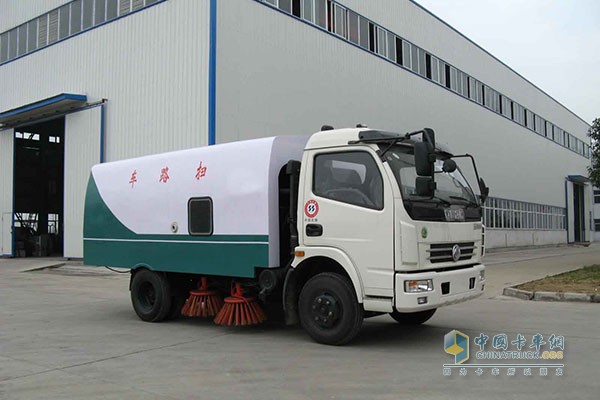In October 2015, the China Urban Environmental Health Association held its annual meeting in Suzhou. Fang Guohao, vice chairman of the association, introduced the development status of the city appearance, sanitation equipment and service industry in 2014. In 2014, the investment in urban fixed assets across the country was 49.48 billion yuan, an increase of 21.16% over 2013. The replacement of labor by manual mechanization of primary and secondary arteries has become the consensus of the industry. Mechanized cleaning has become a trend. The mechanized cleaning rate of most large and medium-sized cities has reached 70%, and the mechanized cleaning rate of some economic development cities has even reached 90%. It is precisely because of the increase in the mechanized cleaning rate that the sanitation equipment industry has been on the rise. In 2014, the total number of special equipment for urban sanitation in the country reached 141,400. High-efficiency and environmentally-friendly new types of special vehicles for environmental sanitation have become the mainstay, and old equipment is facing accelerated elimination. In addition to sanitation vehicles, the quality and quantity of public sanitation facilities such as public toilets are also increasing. In 2014, the number of public toilets in urban areas in China reached 124,400, and the proportion of public toilets in category III or higher increased from 70.83% in 2013 to 74.83%. The R&D, production and sales of sanitation vehicles in 2014 exhibited the following major features: First, the market for new energy sanitation vehicles warmed up. In 2013, the country implemented four national standards. In 2014 and 2015, Beijing, Shanghai, Guangdong, and the Pearl River Delta began to gradually implement the national five emission standards. With the gradual increase of emission standards, the replacement of vehicles will be accelerated. The cost rises. Therefore, new energy sanitation vehicles have begun to be used in many places, and the economic and alternative benefits of such vehicles have been highlighted. On the other hand, the “Circular Concerning Continuing the Promotion and Application of New Energy Vehicles†promulgated by the State requires that the proportion of newly-added or updated public transport, public service, logistics, and environmental protection vehicles in new energy vehicles should not be less than 30%. The city focuses on promoting new energy sanitation vehicles. Second, the mechanization of sanitation continues to cover small and medium-sized cities and towns. For example, in Minxian County, Sichuan Province, in the 2013 and 2014 provincial and municipal revolutionary old district construction subsidy fund sanitation equipment procurement projects, the successful bid amounted to 7.185 million yuan. Third, the new technology standards for sanitation vehicles boost the level of equipment. In 2014, the standards for road sweepers, garbage trucks, suction trucks, sprinklers, and sewage suction trucks entered the revised status one after another. Fourth, from the perspective of the production and sales structure of sanitation vehicles, the total production volume of typical sanitation vehicles in 2014 reached 54,100 vehicles, and garbage sanitation vehicles accounted for the majority. In addition, with the completion of the rural clean-up projects in some provinces and cities, the proportion of light and mini vehicles has declined, and the overall proportion of medium and heavy-duty sanitation vehicles has been relatively high. Fifth, the market is showing a good situation with a fierce middle competition. In 2014, the sanitation equipment market capacity was over RMB 18 billion. Zoomlion's sales of nearly RMB 5 billion, which is well-known for its good quality and excellent service, ranked first in the industry. Hubei Cheng Li, with its low-cost strategy to attack the low-end market, also obtained a better market. At the meeting, Fang Guohao also predicted the future development trend of the sanitation equipment market. First, since 2014, the intensive introduction of investment and financing policies represented by the PPP model has driven the rapid development of the sanitation equipment market. The representatives of Zoomlion, Zhongke Baohua, Xiandawei, Yutian, etc., have already gained a lot of valuable experience in the exploration of the PPP model. Second, the sanitation equipment market is showing an intelligent development trend. Mainly in personalized customization and information management. At present, many companies begin to explore customized products based on the different needs of customers. With the continuous improvement of the mechanization rate of sanitation, many cities have begun to launch and explore the construction of the sanitation vehicle information supervision system. Finally, the promotion and popularization of new energy sanitation vehicles will increase. It is understood that this conference not only announced the development of the national sanitation industry, but also commended the advanced companies in the industry. The participating companies also brought their own representative vehicles to display and demonstrate the operation on the road. More than 400 people participated in the national urban management system and enterprises. 321/H Seamless Stainless Steel Tube 321/H Seamless Stainless Steel Tube,Tp321 Stainless Steel,321 Ss Pipe,Stainless Steel 321 Pipe Zhejiang Fonye Group Co.,Ltd , https://www.fonyegroup.com
Sanitation car production and sales out of the market alone